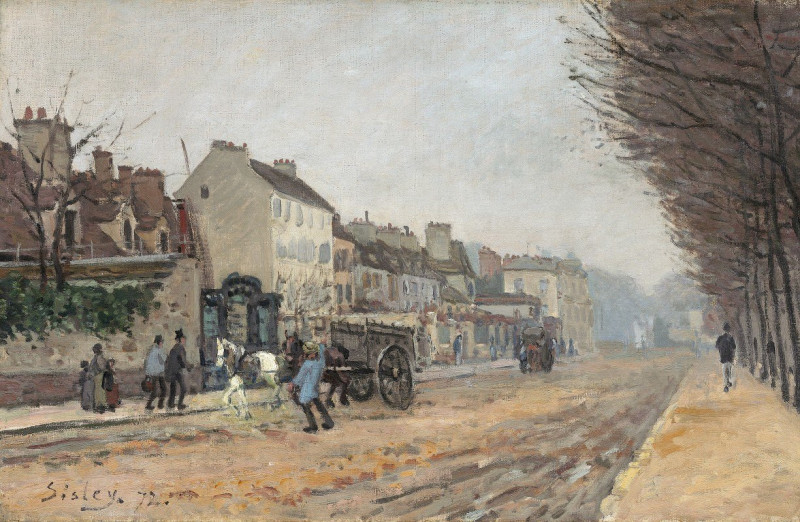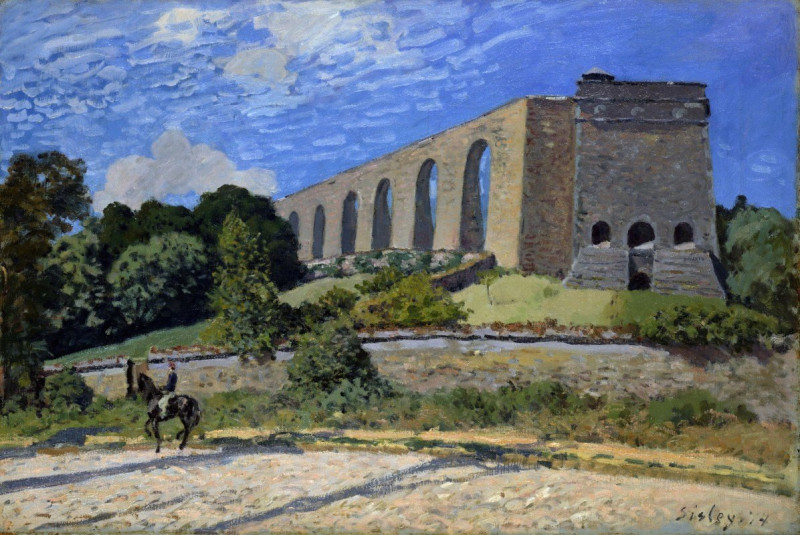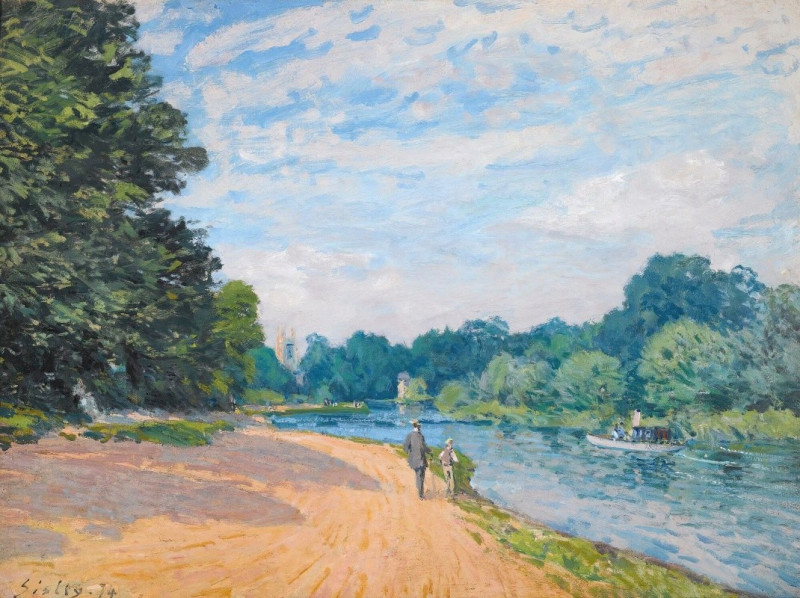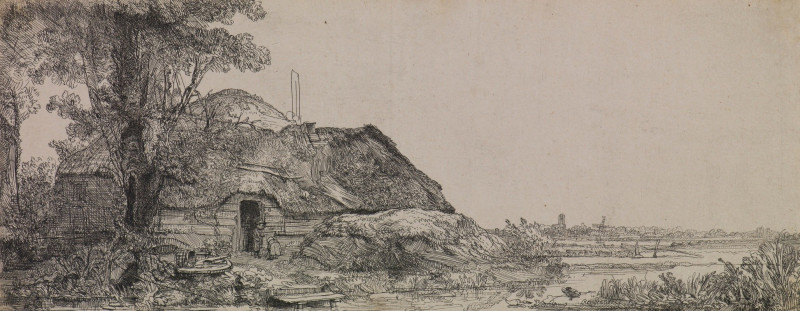Femme et enfant sur le chemin des près, Sèvres (circa 1879)
Technique: Giclée quality print
Recommended by our customers
More about this artwork
Explore the serene and picturesque landscape of "Femme et enfant sur le chemin des près, Sèvres" created by Alfred Sisley circa 1879. This stunning painting immerses viewers in a tranquil rural scene in Sèvres, France, characteristic of Sisley's Impressionist style.The composition draws the eye along a meandering dirt road that slices through lush greenery. Dominating the canvas on the left, a group of trees with their robust branches sway slightly under a breezy sky, painted in delicate strokes of blue and white. The scene is energetically balanced with a dense cluster of bushes on the right, their dark foliage contrasting with the light open sky.Along the path, a woman and a child stroll leisurely, depicted in a harmonious blend of blues and pastels, emphasizing a moment of peaceful daily life. Their presence in the landscape provides a human touch to the natural setting, invoking the simplicity and beauty of rural existence.In the background, rustic houses painted in subtle earthen tones hint at a quaint village life, nestled within the embrace of nature. This artwork encapsulates not only the aesthetic beauty of the landscape but also the rhythm of countryside living, making it a captivating piece that draws admiration for its clarity and tranquility."Femme et enfant sur le chemin des près, Sèvres" stands as an exemplary showcase of Sisley's mastery in capturing the luminous effects of light on nature and the delicate interaction between humans and their environment.
Delivery
Returns
Alfred Sisley (1839–1899), an English impressionist artist, was renowned for his breathtaking impressionist landscape paintings. Born in 1839 to a wealthy family in Paris, Sisley spent most of his life in France. Despite being intended for a career in commerce, he rebelled and pursued his passion for painting as an amateur in the studio of Charles Gleyre, where he befriended artists Claude Monet and Pierre-Auguste Renoir. The financial loss of his family in the Franco-German War led Sisley to make a career out of his art, though it left him financially distressed. It wasn't until after his passing in 1899 that the true value of his work was recognized.














































